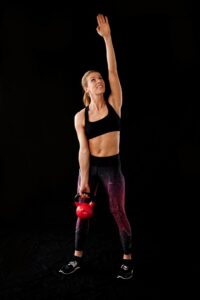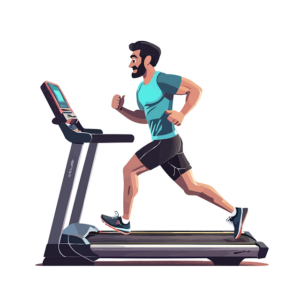
Integrating gym workouts with physical labor is a robust strategy for comprehensive fitness that enhances both strength and endurance. Gym exercises like deadlifts, squats, and presses contribute to functional muscle development, preparing the body for everyday tasks and improving overall health. Cardiovascular routines at the gym, including HIIT and steady-state cardio, are key for heart health and stamina. Manual labor itself acts as a form of physical labor fitness training, engaging muscles in ways that mimic real-world demands and can lead to muscular hypertrophy when performed with proper form. For those who balance gym workouts with manual labor, the combination promotes a more functional and holistic approach to fitness, reducing injury risks and aligning with daily life activities. Employers and employees alike benefit from incorporating structured strength training into physical labor routines, as it fortifies muscular endurance, bone density, and joint stability, thereby improving job performance and accelerating recovery times. A well-rounded fitness regimen that includes both gym workouts and physical labor requires careful planning to manage the contrasting demands of each, with a focus on warm-ups, cool-downs, nutrition, safety, and injury prevention. This approach ensures that individuals can achieve their fitness goals while maintaining peak performance in their jobs, highlighting the importance of a multifaceted fitness strategy for optimal health outcomes.
Physical labor has long been a cornerstone of human health and fitness. Beyond its historical significance, manual exertion offers tangible benefits that complement modern gym practices. This article delves into the synergy between physical work and structured fitness routines, emphasizing how integrating the two can enhance overall well-being. We’ll explore the role of physical labor in promoting muscle development, the importance of balancing gym workouts with daily physical activities, and strategies for incorporating strength training into labor-intensive tasks safely and effectively. Join us as we examine the multifaceted relationship between manual exertion and gym fitness, highlighting key considerations for those looking to harness the combined power of both.
- The Role of Physical Labor in Fitness and Gym Practices
- Assessing the Impact of Manual Exertion on Muscle Development
- Balancing Gym Workouts with Daily Physical Activities for Optimal Health
- Incorporating Strength Training into Physical Labor Routines for Enhanced Fitness
- Overcoming Challenges and Safety Considerations in Combining Gym and Physical Work
The Role of Physical Labor in Fitness and Gym Practices
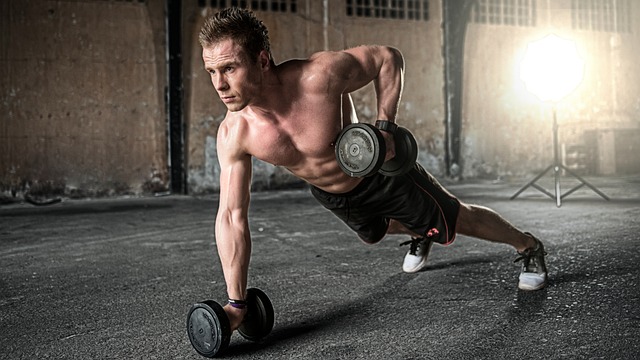
Engaging in physical labor represents a cornerstone in the realm of fitness and gym practices, where it serves as a foundational element for building strength, endurance, and overall health. The exercises mimicked in gyms often draw from real-world manual labor tasks, providing individuals with functional fitness experiences that translate to everyday activities. For instance, weightlifting exercises like deadlifts, squats, and presses not only help in sculpting muscular physiques but also enhance the body’s ability to perform tasks such as lifting heavy objects or maintaining proper posture during long periods of activity. Similarly, cardiovascular workouts that simulate the intensity of physical labor can significantly improve heart health, lung capacity, and stamina, which are crucial for sustained effort over time.
Moreover, incorporating gym workouts that emulate the demands of physical labor can lead to tangible improvements in an individual’s athletic performance, resilience, and adaptability to various fitness challenges. By engaging in a diverse range of activities, from high-intensity interval training (HIIT) to steady-state cardio, gym-goers can expect to see gains not only in their physical capabilities but also in their mental fortitude. This synergy between fitness and labor-intensive activities underscores the importance of a well-rounded exercise regimen that includes both strength training and cardiovascular workouts, thus making it a valuable component for anyone seeking to enhance their fitness levels or maintain an active lifestyle.
Assessing the Impact of Manual Exertion on Muscle Development
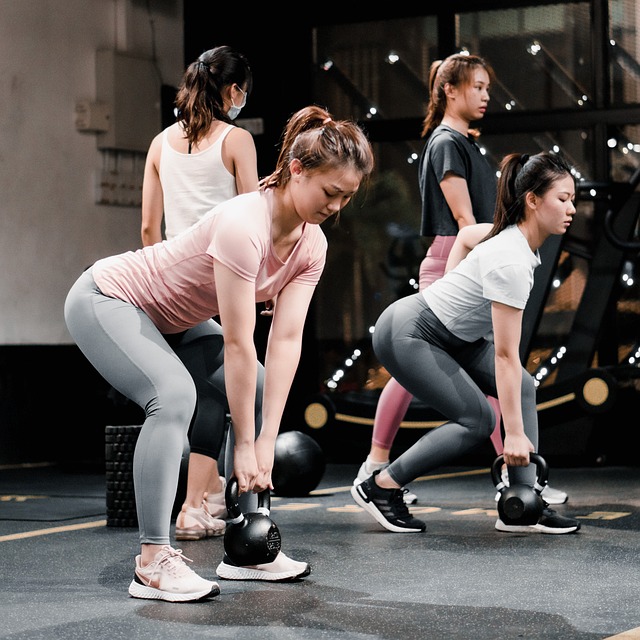
Engaging in physical labor that involves manual exertion can significantly influence muscle development, offering a unique fitness experience distinct from traditional gym routines. Manual labor tasks, such as lifting, pushing, and pulling, activate muscles across various spectrums of the body. These activities often demand a level of strength and endurance that can lead to substantial muscle growth, particularly in the larger muscle groups used consistently throughout the day. The type of load and frequency of effort in manual labor can stimulate muscular hypertrophy, where muscles adapt to the stress by growing larger and stronger to handle future demands. Unlike structured gym workouts, manual labor exposes individuals to a diverse range of movements and loads that can enhance overall functional fitness. It’s important for those engaging in such activities to maintain proper form and technique to minimize injury risk and maximize the benefits for muscle development. Incorporating exercises similar to those encountered in manual labor into gym routines can complement and amplify the gains made on the job, creating a comprehensive approach to fitness that harnesses the best of both worlds.
Balancing Gym Workouts with Daily Physical Activities for Optimal Health

Integrating gym workouts with daily physical activities can significantly enhance overall health and well-being. Regular gym sessions provide a structured environment where individuals can focus on specific fitness goals, utilizing a variety of equipment to target different muscle groups. For instance, weightlifting at the gym can bolster muscular strength and endurance, while cardiovascular machines offer a controlled setting for improving heart health and stamina. However, it’s equally important to complement these gym-focused efforts with everyday physical activities that mirror real-life movements and challenges. This combination not only promotes balanced fitness development but also better prepares the body for the demands of daily life, leading to improved functional strength and resilience against injuries. Engaging in activities like cycling to work, taking stairs instead of elevators, or participating in a weekend sports league can all contribute to a more active lifestyle. These everyday actions reinforce the benefits achieved through gym workouts, fostering an holistic fitness regimen that aligns with individual health objectives and contributes to a vibrant, energetic life. Incorporating both gym-based and daily physical activities ensures a well-rounded approach to fitness, one that leverages the strengths of each setting to achieve optimal health outcomes.
Incorporating Strength Training into Physical Labor Routines for Enhanced Fitness
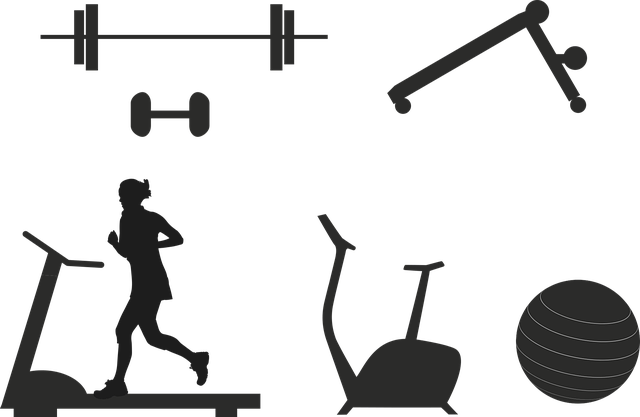
Integrating strength training into physical labor routines can significantly enhance overall fitness, particularly for individuals whose work predominantly involves physical exertion. Strength training not only builds muscular endurance but also improves bone density and joint stability, which are crucial for preventing injuries common in physically demanding jobs. By incorporating gym equipment and exercises that target all major muscle groups, workers can experience a multitude of benefits. These include increased cardiovascular health, improved metabolic rate, and heightened energy levels, all of which contribute to better performance on the job and faster recovery between tasks. Additionally, regular strength training can lead to more efficient work productivity, as it boosts the power and force workers exert, making routine labor less strenuous and potentially more enjoyable over time. Employers and workers alike should consider the integration of gym-based strength programs into their health and safety protocols to reap these fitness rewards while ensuring that employees remain fit for their physical roles.
Overcoming Challenges and Safety Considerations in Combining Gym and Physical Work
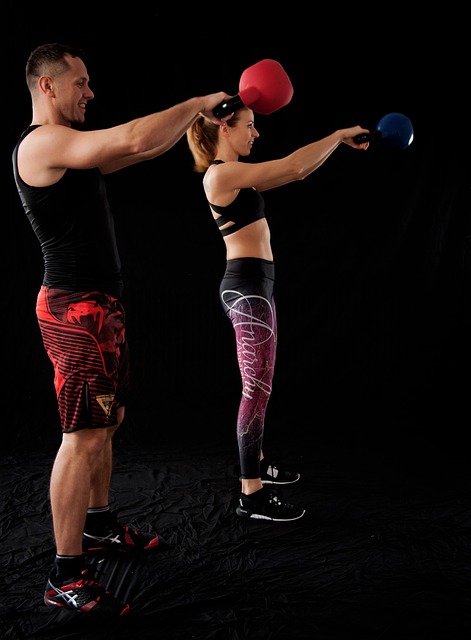
Engaging in a regimen that combines gym workouts with physical labor presents unique challenges and safety considerations for individuals aiming to enhance their fitness. Balancing the structured environment of a gym with the unpredictable nature of manual work requires careful planning to avoid overexertion and injury. Gym routines, which typically involve machines and controlled movements, contrast sharply with the dynamic demands of physical labor, where tasks such as lifting, carrying, and repetitive motions are common. To maximize fitness gains while minimizing risks, it’s crucial to focus on exercises that complement and support the physical activities performed outside the gym. Proper warm-up and cool-down routines are essential to prepare the body for the day’s work and aid in recovery afterward. Additionally, individuals should be mindful of their nutritional intake to fuel both muscle growth from gym sessions and the energy needed for physical tasks. Safety measures must also be prioritized; this includes using appropriate protective gear, staying hydrated, and recognizing the signs of overtraining or injury. By integrating core strengthening, flexibility training, and cardiovascular exercises at the gym, workers can enhance their endurance and resilience, making them more capable of handling the physical demands of their jobs while also progressing toward their fitness goals.
Incorporating physical labor into one’s fitness regimen, particularly in conjunction with gym workouts, can yield substantial benefits for overall health and muscle development. This article has explored the multifaceted role of manual exertion within fitness practices, emphasizing its significance in balancing daily activities to achieve optimal well-being. Strength training, a cornerstone of both physical labor and gym routines, stands out as a powerful method to enhance fitness levels. However, it is imperative to address the challenges and safety considerations when combining these two domains to prevent injury and ensure sustainable progress. By understanding and implementing best practices for integrating physical work with structured gym sessions, individuals can craft an effective and holistic fitness approach that promotes robust health and resilience.
